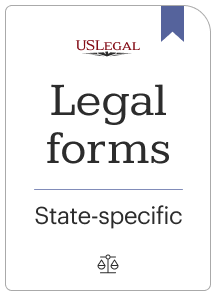

An addendum is a thing to be added; an addition. For example, it may be used to add supplemental terms or conditions to a contract or make corrections or supply omissions to a document. An addendum is often used to supply additional terms to standardized contracts, such as leases. Addendum is singular; the plural form is addenda.
Real propertysales agreements often have addenda (plural of addendum) as the buyer and seller negotiatefine points (how payments will be made, what appliances will be included, date of transfer oftitle, the terms of financing by the seller and the like). Although often they are not, addendashould be signed separately and attached to the original agreement so that there will be noconfusion as to what is included or intended.
The Texas Addendum to Real Estate Purchase and Sale Agreement, also known as the Texas Real Estate Addendum, is a legal document that is used in the state of Texas to amend or add specific terms and conditions to the standard Real Estate Purchase and Sale Agreement. This addendum helps to ensure that the agreement reflects the unique requirements and regulations of the Texas real estate market. There are various types of Texas Addendum to Real Estate Purchase and Sale Agreement, which may be used depending on the specific circumstances of the transaction. Some commonly used types include: 1. Financing Addendum: This addendum outlines the specific terms and conditions related to the financing of the property. It includes details about the type of loan, interest rate, down payment, and any contingencies related to financing. 2. Property Condition Addendum: This addendum addresses the condition of the property being sold and may include provisions for inspections, repairs, and disclosures by the seller regarding any known defects or issues with the property. 3. Homeowners Association (HOA) or Condo Addendum: If the property being sold is part of a homeowners association or condominium association, this addendum outlines the specific terms and conditions related to the association, including any fees, restrictions, or regulations that the buyer must agree to. 4. Seller's Disclosure Addendum: This addendum requires the seller to provide a detailed disclosure statement regarding any known defects, issues, or hazards related to the property. It helps to protect the buyer from any potential future problems that may arise. 5. Special Provisions Addendum: In certain cases, additional terms and conditions may be required based on unique circumstances. This addendum allows for the inclusion of specific provisions that are not covered in the standard agreement. When using the Texas Addendum to Real Estate Purchase and Sale Agreement, it is important for both the buyer and seller to carefully review and understand the terms and conditions stated in the addendum. It is also advisable to seek legal counsel for any questions or concerns related to the document. Overall, the Texas Addendum to Real Estate Purchase and Sale Agreement is a crucial tool that helps to customize and specify the terms of a real estate transaction in the state of Texas, ensuring that all parties are protected and their rights and obligations are clearly defined.
The Texas Addendum to Real Estate Purchase and Sale Agreement, also known as the Texas Real Estate Addendum, is a legal document that is used in the state of Texas to amend or add specific terms and conditions to the standard Real Estate Purchase and Sale Agreement. This addendum helps to ensure that the agreement reflects the unique requirements and regulations of the Texas real estate market. There are various types of Texas Addendum to Real Estate Purchase and Sale Agreement, which may be used depending on the specific circumstances of the transaction. Some commonly used types include: 1. Financing Addendum: This addendum outlines the specific terms and conditions related to the financing of the property. It includes details about the type of loan, interest rate, down payment, and any contingencies related to financing. 2. Property Condition Addendum: This addendum addresses the condition of the property being sold and may include provisions for inspections, repairs, and disclosures by the seller regarding any known defects or issues with the property. 3. Homeowners Association (HOA) or Condo Addendum: If the property being sold is part of a homeowners association or condominium association, this addendum outlines the specific terms and conditions related to the association, including any fees, restrictions, or regulations that the buyer must agree to. 4. Seller's Disclosure Addendum: This addendum requires the seller to provide a detailed disclosure statement regarding any known defects, issues, or hazards related to the property. It helps to protect the buyer from any potential future problems that may arise. 5. Special Provisions Addendum: In certain cases, additional terms and conditions may be required based on unique circumstances. This addendum allows for the inclusion of specific provisions that are not covered in the standard agreement. When using the Texas Addendum to Real Estate Purchase and Sale Agreement, it is important for both the buyer and seller to carefully review and understand the terms and conditions stated in the addendum. It is also advisable to seek legal counsel for any questions or concerns related to the document. Overall, the Texas Addendum to Real Estate Purchase and Sale Agreement is a crucial tool that helps to customize and specify the terms of a real estate transaction in the state of Texas, ensuring that all parties are protected and their rights and obligations are clearly defined.